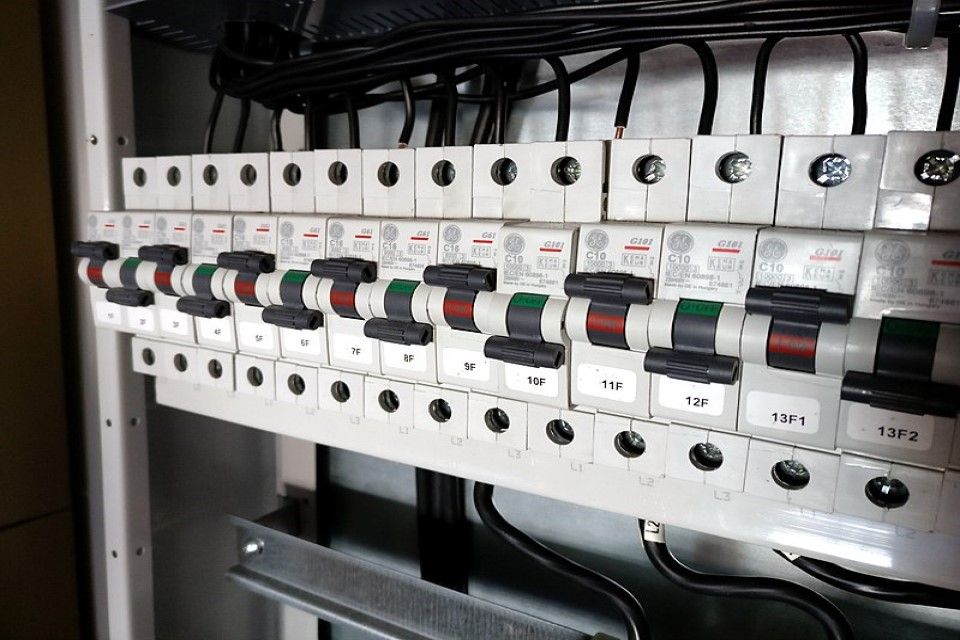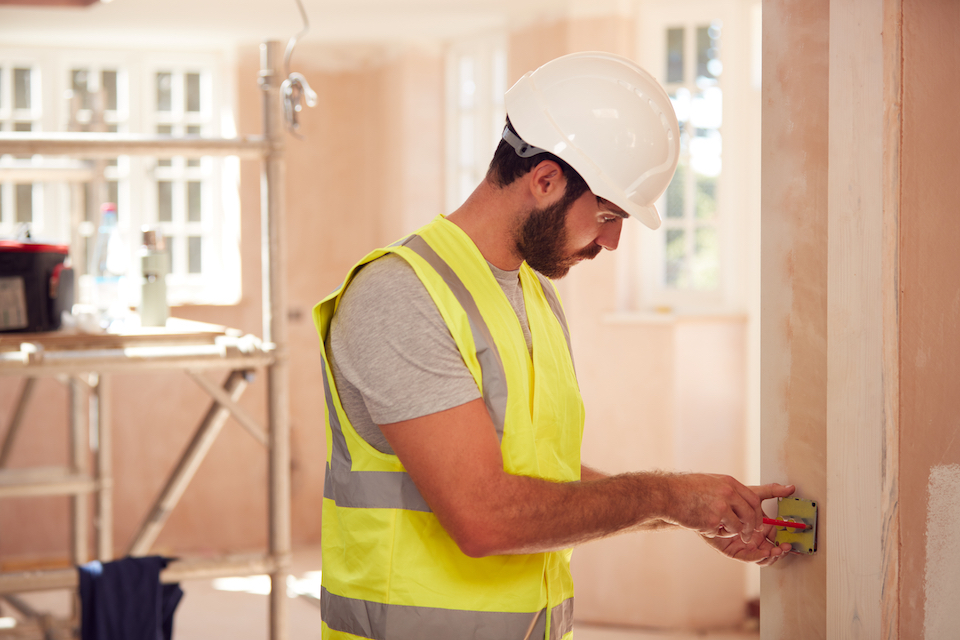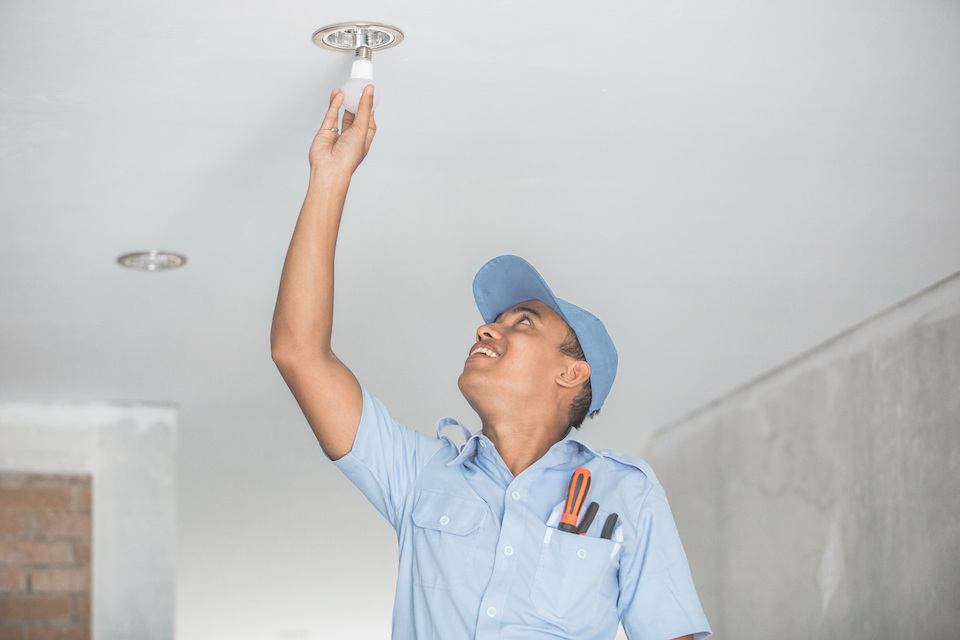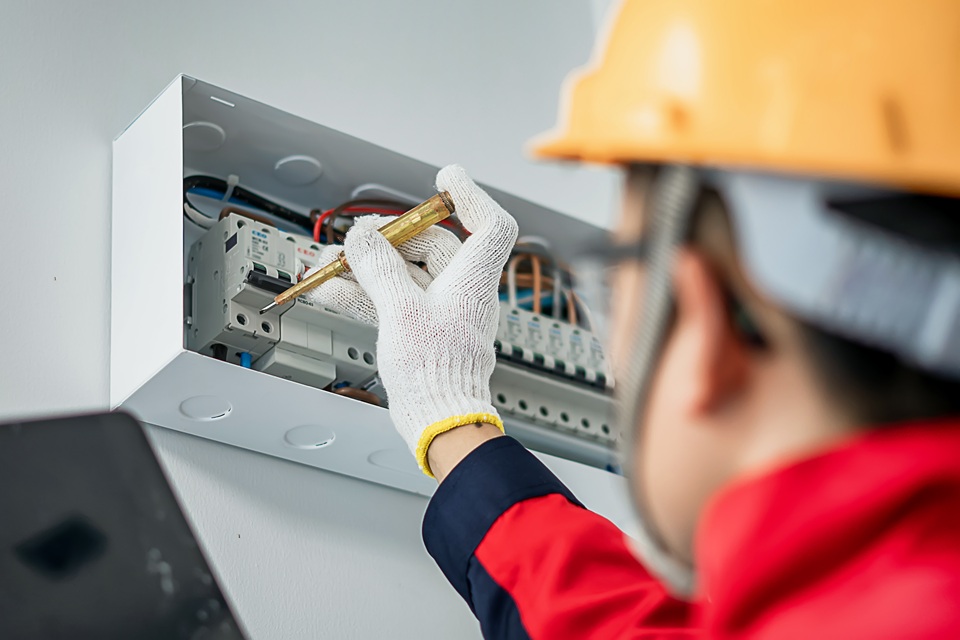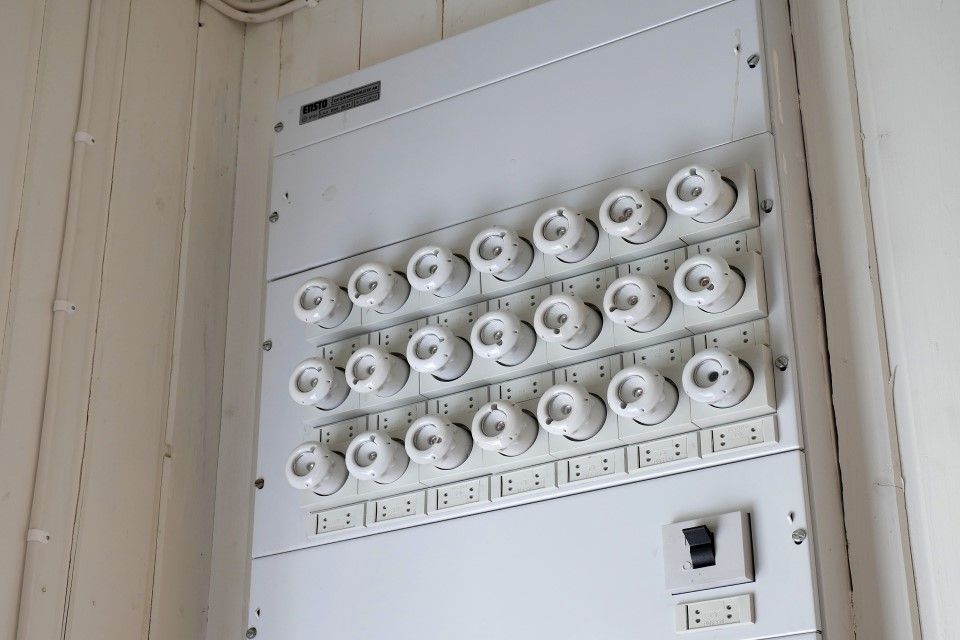Introduction to Isolator Switches
If you’re a student of electrical engineering or a professional in the field, then the concept of isolator switches might not be so foreign. However, if you are a layman, newbie, or DIY enthusiast, you might need a helping hand.
In this article, we’ll deliver answers to some pressing questions such as ‘what is an isolator switch?’, ‘what appliances are compatible with them?’, and ‘why are they important?'. We'll also look into the various types available out there.
- Introduction to Isolator Switches
- What is an Isolator Switch?
- Isolators vs Circuit Breakers
- What Does an Isolator Switch Do?
- What Appliances Need an Isolator Switch?
- Where Do Isolator Switches Need to Be Located?
- Types of Isolator Switch
- Building Regulations for Isolator Switch
- Cost of an Electrician
- FAQs
- Sources
What is an Isolator Switch?
So, what exactly is an isolator switch? In the simplest terms, isolator switches (also known as a main isolator switch) are devices or systems that isolate a particular circuit for maintenance and prevent currents from passing through.
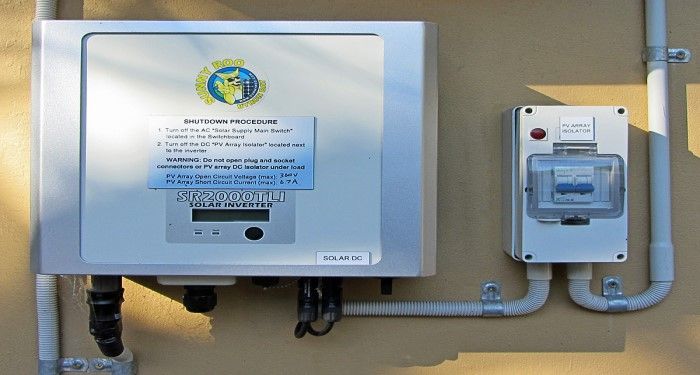
These switches are used for a range of electrical appliances and applications, including power grids, kitchen tools, and so much more.
What’s more, as they set apart a circuit within a system or grid for repairs or maintenance, it is not unusual to find them on power lines, grids, and so on.
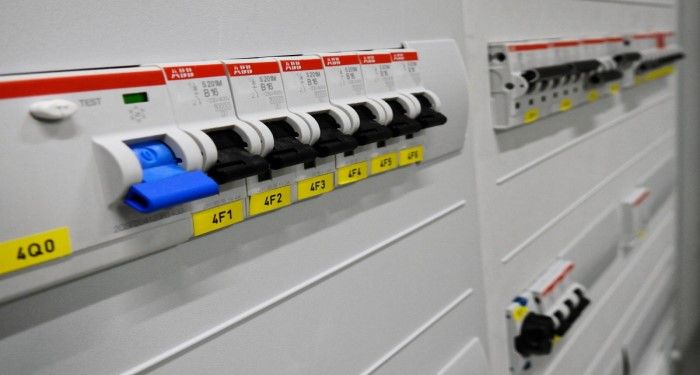
It’s also worth noting the close relationship between isolators and circuit breakers; in fact, many people think they do the same job. However, they have key differences that set them apart, such as their functions and abilities, amongst others.
With that said, isolator switches can be used on an even smaller scale for household appliances and the likes. In these cases, wall sockets can act as isolator devices/switches since they can be turned off to stop the flow of energy into one particular circuit. Even more, once unplugged, the appliance can be safely worked on.
Isolators vs Circuit Breakers
Circuit breakers are very common electrical switches that interrupt power supply into a circuit, when excess current or charge is detected. In a nutshell, they act as circuit shields to ensure no damage is caused from excess currents trying to get through.
More so, due to their method of operation, circuit breakers are very useful even when a load is still on and can also be used when the load is off.
Conversely, isolators only come in handy when the circuit is in a ‘no-load’ position, and it is not advisable to use them when current is passing through.
Interestingly, isolators can easily work with circuit breakers if the latter requires maintenance. So, from the picture painted so far, it's clear that circuit breakers act as protectors, while isolators simply fix the problem.
That said; there are still a handful of differences between circuit breakers and isolators, one of which is that circuit breakers work automatically. Altogether, that means you don’t have to give any specific commands before the job is done.
Rather, once a circuit breaker detects a spike in electrical current, it trips off. Whereas, with isolators, you have to manually work them before they can isolate electrical currents for maintenance.
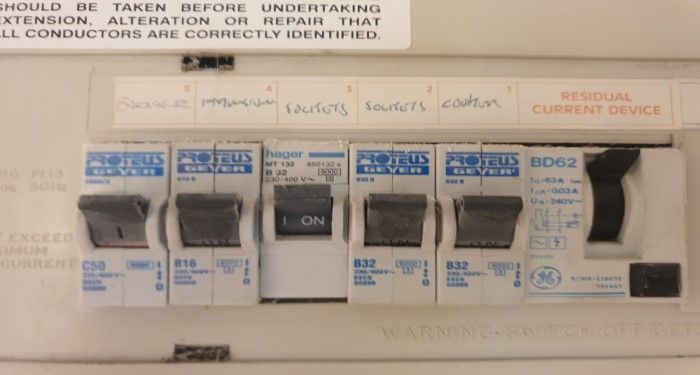
It’s also worth noting that due to their numerous applications, circuit breakers are typically capable of handling more power, that’s why they carry enough capacity to work even with a load on.
Meanwhile, isolators can only withstand a small amount of electricity - since they have been specially designed to be used when the electrical circuit is off.
With all of that said, it is quite clear that there are major differences between circuit breakers and isolators, and while many assume that one works better than the other, the truth is that they are both vital for any electrical set up.
What Does an Isolator Switch Do?
As briefly mentioned earlier, an isolator switch sets apart electrical circuits from the main power source so that repair work can be carried out. Here’s an example; imagine painting a wall and finding out that there is a section of the surface that is defective and needs a new coat of paint.
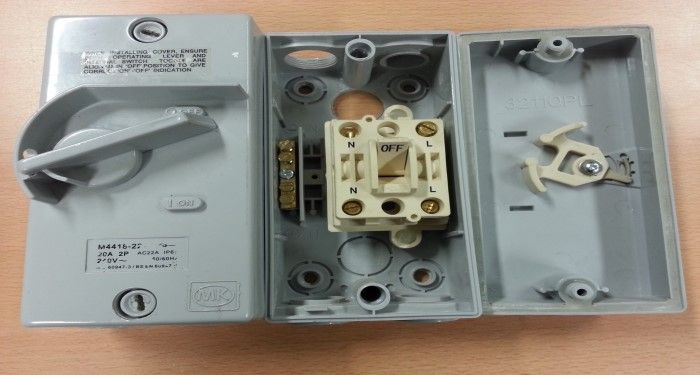
In that situation, it is advisable to cordon off the other parts of the wall and maybe, even cover them up to focus on the problematic section.
Only then can you go ahead and paint, without having to worry about getting other areas of the wall stained. This is quite similar to what isolators do; you can quickly manage the job at hand without tons of setbacks.
More so, as you know, a large amount of electrical current can pass through a human being; which can be fatal. Luckily, with an isolator switch, unfortunate situations like these are prevented.
In fact, this is one of the safety tools that engineers use when working with something as volatile as electricity.
What Appliances Need an Isolator Switch?
Most appliances need an isolator switch; if tinkered with while powered on, accidents can occur, regardless of the appliance. However, since wall sockets can also act as isolation switches, smaller appliances like microwaves, irons, and electric kettles don’t need a dedicated isolation switch before maintenance is carried out.
Below, we’ll take a look at some of the tools and devices that require an isolation switch.
Extractor fans
Extractor fans are regularly found in bathrooms or kitchens and work to remove stale and humid air which is then replaced with fresh air. Also, due to building regulations more and more homeowners need extractor fans.
However, due to the sophistication of these machines and the power they possess, they need isolation switches for repairs or maintenance.
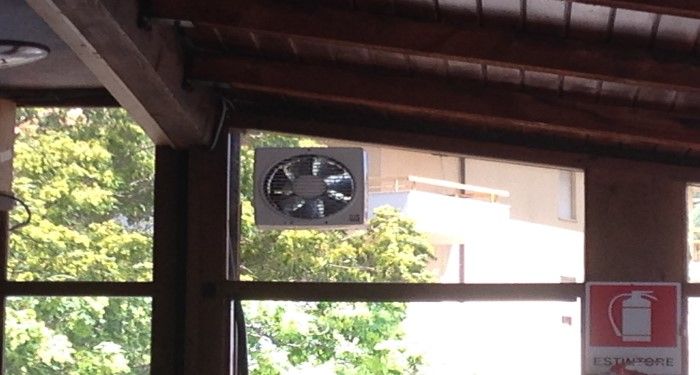
For this reason, fans generally make use of 3-pole isolation switches because there are three lines that usually need disconnection to completely isolate the fan.
if an isolator switch isn’t installed, maintenance requires shutting down a large swath of circuits which could affect other appliances.
Showers
Electrical showers are common in most homes and outfitting with an isolator switch is often required; as showers tend to be fitted in special locations.
For clarification, a special location is an area where installation carries a greater risk of electric shock and since bathrooms tend to be more humid and wet, they fall under this category.
Therefore, for safety, electrical showers must have an isolation switch installed. Failure to do so is a code 2 defect and means you run the risk of breaching the rules enshrined in BS7671.
Refrigerators
Refrigerators, especially large ones, need an isolation switch to ease the challenges associated with maintenance and repairs. Just like with showers, refrigerators are in close proximity to water and could be dangerous if not handled properly.
Also, most freezers or refrigerators have sockets that are hard to reach which means you’ll have to touch or move the appliance; which could be dangerous if it develops a fault.
This is why an isolator switch is required and the absence of one is a possible breach of BS7671 which recommends that all kitchen appliances be outfitted with isolators.
Air conditioners
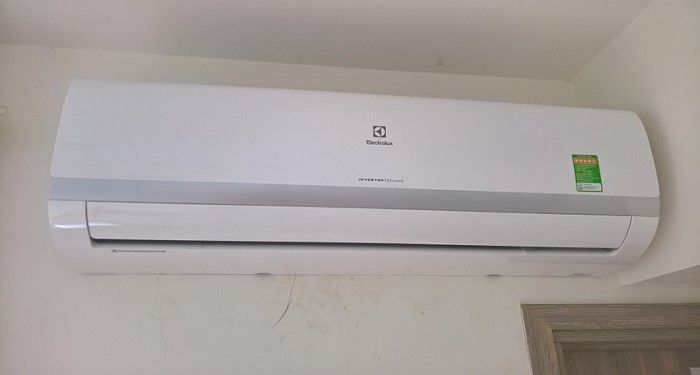
While it’s okay to hardwire your air conditioner to the switchboard, it has a few drawbacks and could even be hazardous in some cases.
It is advisable to equip your outdoor unit with an isolator switch as it protects the appliance from strikes in a storm and also prevents your home safety switch from tripping in the event of a fault.
Other household appliances
So far, we have talked about isolator switches in the context of larger electrical appliances and power grids, where they are indispensable. But, how about, everyday smaller at-home appliances? Do they need isolator switches too? That depends on a handful of factors because if we are talking about a small appliance like an iron or an electric kettle, then the plug, in collaboration with the wall socket, probably acts as the isolator switch.

You see, it simply serves the same purpose because once the switch is turned off at the socket, power is interrupted without disturbing any other appliance.
For example, if your microwave has a problem and you need it fixed, the technician will simply turn off the wall socket the microwave is connected to before having a crack at it.
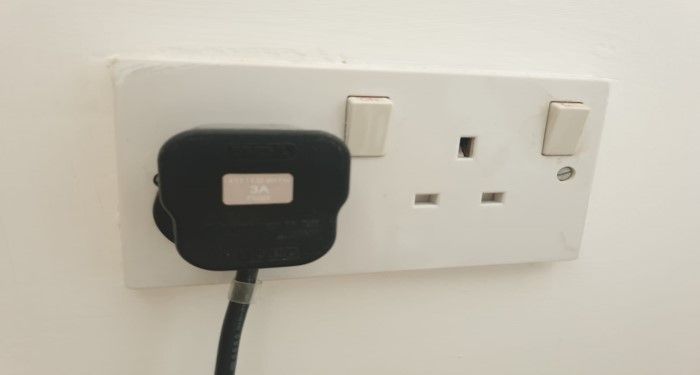
It should be noted that this is not enough to ensure safety because, if the appliance is still plugged in, then the circuit is closed. As such, electric current might still be able to pass through. So, it's advisable to unplug the appliance so you can, in turn, open the circuit and ensure that it is safe to work with.
On the other hand, with larger appliances such as refrigerators and air conditioners, having an individual isolator switch is necessary.
This is because they function with considerable electrical currents and are sometimes not connected directly to the main power source in the building. Therefore, a large fan would need a fan isolator switch to make maintenance easier and safer for technicians.
Where Do Isolator Switches Need to Be Located?
The general rule is that isolator switches should be located apart from the appliance but within reach to ensure easy access and manipulation. Furthermore, the prevailing legislation to cover this is the British Standard BS 7671 "Requirements for Electrical Installations. IET Wiring Regulations."
Close to appliance
It is informally known within the electrical community as ‘the regs’ and it stipulates that for mechanical maintenance, isolator devices or switches should be located close to the appliance.
These stipulations are for the safety of everyone as an isolator switch installed in the wrong place would not only be a breach of the rules but could potentially be very dangerous.
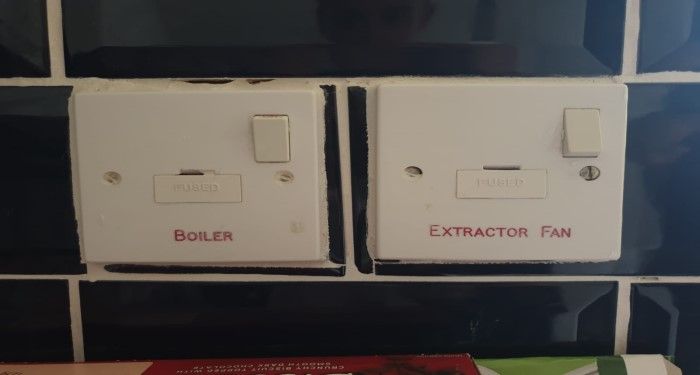
For example, if the isolator switch for an extractor fan is far away from the vicinity of the electrician, the device could be turned on by another individual who is unaware of the maintenance taking place. This is, of course, a dangerous situation for the electrician and could lead to an injury or some other type of hazard.
Accessible space
Furthermore, isolator switches should be located in an accessible space without any obstruction. For example, if the isolator switch to an appliance is buried behind a wall of pots and pans that need to be moved, then it can’t be described as accessible.
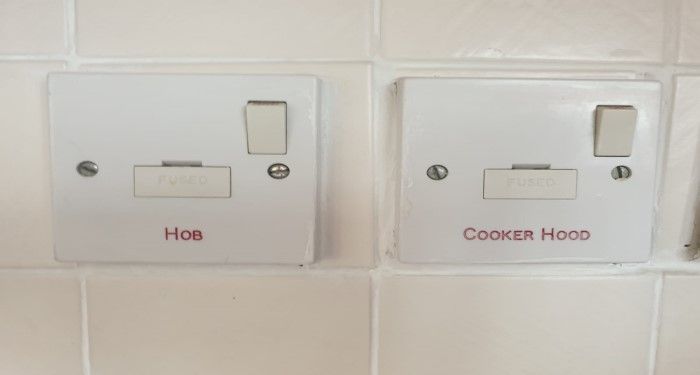
Types of Isolator Switch
As with any device, product, or system, there are different types of isolator switches that work in various ways to do the same job. Some examples are the double pole isolator switch, three-pole isolator switch, and so on. We’ll take a look at them one at a time and try to understand what they do as well as the purpose they serve.
Single pole isolator switch
This is a switch that powers down an electrical circuit and is mostly used with single-phase circuits. Also, it is usually located in the live leg of the circuit; so, make sure you power this section down before repair work can be carried out. That said, they are mostly used for small appliances like lights, and are not as safe to use as double pole isolator switches. This is because while they power down the live leg; the neutral leg is still connected, and this can be hazardous in some cases.
Double pole isolator switch
These are also used for single-phase circuits and are designed to isolate circuit breakers and transmission lines for the purpose of maintenance. They also rely heavily on either a rotary or knife-blade disconnect method which is different from a fused isolator switch that works to break the electrical circuit.
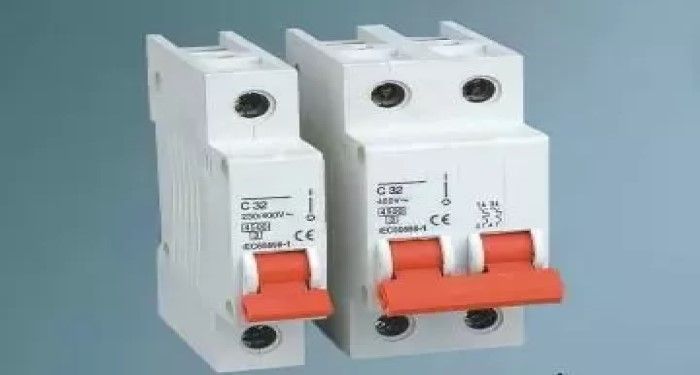
Double pole isolator switches further have mechanical switches which are coupled together and represent both the live and neutral legs of the connection. As such, they completely shut down the circuit and isolate it from the main power source. This points to the fact that both the live and neutral wires are deadened.
It is even more important because neutral wires are naturally earthed and can still carry an electrical charge if not powered down. Therefore, if a hard-wired appliance has a neutral-earth fault, a double pole isolator turns both the live and neutral lines off. This, in turn, makes it safe and convenient to work on the faulty equipment with zero worries.
More so, it's safe to say that this gives it a huge advantage over the aforementioned single pole switch which only powers down the live leg while leaving the neutral still connected and earthed. That could make for a very tricky situation.
3 pole isolator switch
These deal with three-phase supplies and quite simply put, feature three interlocked switches in the three live legs. Just like the other entries, they isolate electrical circuits for easy access.
3 pole isolator switches are equally useful for certain types of devices, for instance, a fan isolator switch often employs a 3 pole isolator switch because there are usually three lines that have to be disconnected before the fan can be isolated.
4 pole isolator switch
This isolator switch shares some similarities with the 3 pole isolator switch but in addition to the three live legs, it has another neutral leg. Even more, this kind of isolator switch serves as both an isolator and a surge protector.
Fused isolator switch
A fused switch isolator switch works in the same way as the other switches we’ve looked at so far. However, it differs from the others in the sense that they contain multiple fuses inside and are generally safer to work with. This is because a blown fuse can damage the circuit and cause harm to anyone working on it.
But if a fused isolator switch is used, it powers down all the circuits housed in it making it easier to work on the damaged area.
Furthermore, it also works to protect the circuit itself as it ensures that electricity doesn’t flow through the circuit while repairs are in progress and this reduces the risk of affecting the circuit adversely.
Battery isolator switch
A battery isolator switch is used mainly with batteries and does the job of diverting electrical flow away from one section of the battery to another. For the most part, it is commonly used with trucks, aeroplanes, other vehicles, and appliances that use multiple batteries to operate.
Altogether, it ensures that the appliance or vehicle still works well even when one of the batteries is dead and unresponsive.
So, when used on a large truck, a battery isolator will separate the various batteries and prevent the truck from drawing from all the batteries at the same time. That's quite handy since it could lead to an electric system failure.
Furthermore, it makes sure that the truck always has some backup energy to draw from. To further clarify this, in a two-battery system, both are connected to the isolator, which is, in turn, attached to the vehicle’s alternator.
The isolator then decides which battery has more power and draws from that while the idle battery is charged. On top of that, battery isolator switches are very important in case of an emergency and when the vehicle is in storage to ensure an electrical isolator.
Building Regulations for Isolator Switch
Building regulations for isolator switches vary depending on the jurisdiction, but as mentioned earlier, the prevailing legislation that deals with electrical installations in buildings in the UK is BS 7671, or the regs.
Furthermore, approved document P zeroes in on the requirements of electrical installations and it defines building work to include ‘the provision or extension of a controlled service or fitting.’
As regards isolator switches, the general rule is that they should be easy to reach and within the sight or control of the electrician. As seen earlier, ease of use, visibility, and freedom from obstruction are all points we’ve talked about when discussing the ideal places for isolator switches to be placed.
In addition to this, there are a few other regulations to take into consideration including the fact that the switch should be located about 750mm to 1200mm above the ground.
Ease of reach
According to section 1.4, part P of the building regs, wall-mounted sockets, and consumer units should be easy to reach. This is in accordance with part M which stipulates that a switch should be located about 450mm to 1200mm above the ground for the sake of those with reduced reach.
Ease of operation
Isolator switches should also be easy to operate and shouldn’t require both hands to function. More importantly, they should always indicate when they are on/off. This will go a long way to ensure that there is no confusion when it comes to their status.
If a system like this isn't in place, it could potentially be dangerous when work is being carried out on the appliance or circuit in question. An additional point is that the front plates of isolator switches should be different from their background so that they are easy to identify when the need arises.
Cost of an Electrician
From all that we have discussed above, it is clear that the job of an electrician is a challenging one. It’s not something that can be handled by amateurs. So, if you are not licensed or have no experience dealing with electrical outlets, then it is best to call an electrician.
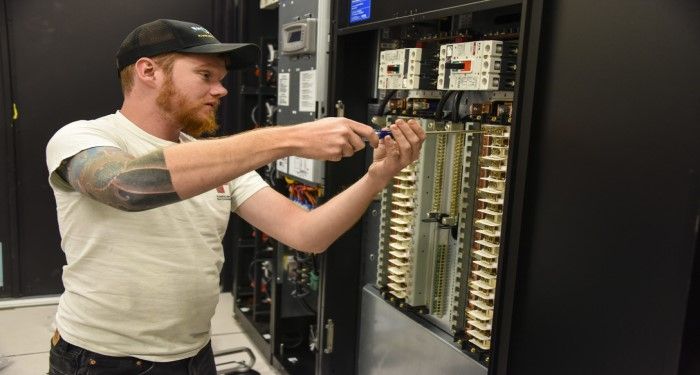
Since they are trained for this type of work, not only do they know more about the job, but they are also more likely to know the best devices and tools to work with.
For instance, if you need a shower isolator switch installed, an electrician will know the type of switch that is best for the job as well as how to set it up and repair it.
Naturally, the first thing that comes to mind when you think of an electrician is how much they cost. While they are generally not affordable to hire, they provide peace of mind that can’t come from any other source. So, how much does a competent electrician cost?
The truth is that the price of hiring an electrician varies based on several factors including the location, the severity of the job, and the experience of the personnel.
Location
No matter where you live, the concept of location is varied since you have to consider where the electrician is coming from and the proximity of the stores where they get their supplies.
On the other hand, the price of electricians varies from region to region. For instance, an electrician in an urban area, such as London, will likely cost over £100 an hour.
Severity
The rate an electrician will ask for is tied to the amount of work you want to be done. As such, changing a light fixture will be a lot cheaper than wiring a house.
So, if you are looking to engage an electrician, you need to consider the work you want to be done. That said, the most expensive types of jobs are smart home installations which could get as high as £2000.
Experience
Depending on how much experience the electrician has, their prices may be very high, or moderate. There are three license types for electricians namely, apprentice, journeyman, and master. So, you can expect to pay a lot of money to get a master electrician. However, you are also confident that they will deliver excellent service based on their level of experience.
With all of that said, there are a few other factors to consider including the time of the day. So, if you call an electrician at night, during a holiday, or on short notice, you are going to pay possibly double the hourly rate that you’re used to.
Furthermore, a master electrician will most likely collect a first-hour rate in excess of £150 and an average hourly rate of £100. Meanwhile, a journeyman should cost about £55 per hour while an amateur should cost about £40 per hour. It should be noted that this is not a fixed price and it could vary depending on many of the factors we’ve discussed above.
FAQs
Q: Who can fit an isolator switch?
A: An isolator switch should be fitted by an experienced electrician as they have the skills and experience to know the right tools to use for the job. While you can try your hand at installing an isolator switch, it is much better to leave it to a professional.
Q: What is a fan isolator switch?
A: With a name like that, you may be tempted to believe that fan isolator switches are for regular fans. However, this is untrue, these devices are more commonly used with extractor fans because they contain considerable energy and are dangerous. As such, a fan isolator switch works to isolate the fan which, in turn, makes it easier to carry out repairs and maintenance.
Q: Can you use a circuit breaker as an isolator device?
A: While this is theoretically possible, it is advisable to use an isolator device for isolating a circuit before trying to fix it up. You see, while a circuit breaker protects the circuit from overload, and can be operated when the load is still on. Isolator switches only work when the load is off.
Q: What is a battery isolator?
A: A battery isolator works to divert energy away from one battery and into another. As a result, the device or vehicle doesn’t take up power from more than one source because that could end up draining the batteries faster.
Q: What is electrical earthing?
A: Electrical earthing is the process of diverting electrical discharge into the earth using a low resistance wire. It is done by simply connecting a wire that isn’t carrying any current to the ground.
Sources
- https://www.electricalsafetyfirst.org.uk/media/1201/best-practice-guide-2-issue-3.pdf
- https://uk.rs-online.com/web/
- https://www.elprocus.com/4-pole-isolator-working-and-its-specifications/
- https://itstillruns.com/battery-isolator-work-5005295.html
- https://circuitglobe.com/electrical-earthing.html
- https://www.tlc-direct.co.uk/Technical/DataSheets/MK/3_Pole_Fan_Isolator.pdf
- https://www.elprocus.com/electrical-isolator-definition-working-types-of-isolator-applications/
- https://www.watelectrical.com/electrical-isolator-working-types/
- https://www.hagerelectro.com.au/as-nzs-3000-2018-wiring-rules/isolator-switch-requirements/41093.htm

